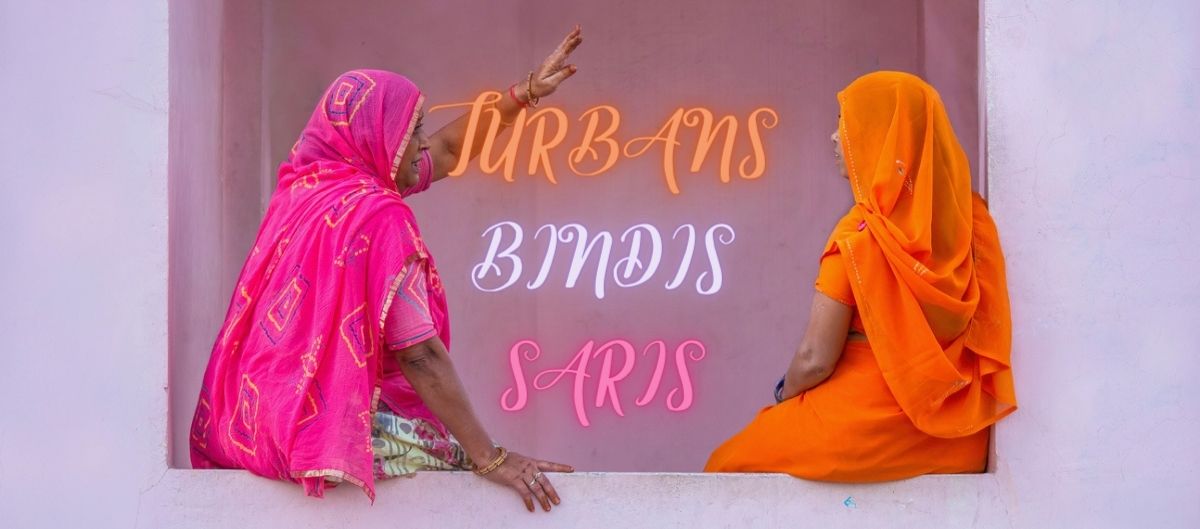Turbans, Bindis and Saris: The Unusual Significance of India’s Clothing

I loved watching Indian women draped in brightly colored, embellished silks managing to accomplish, to me, awkward side-saddle motor bike rides, managing unruly kids, raking basmati, worshipping at the temple all the while composed and lovely in their saris.

In Indian culture, the sari symbolizes respect, dignity, modesty and confidence.


The word “sari” means “strip of cloth” in Sanskrit. But for the Indian women—and a few men—who have been wrapping themselves in silk, cotton, or linen for millennia, these swaths of fabric are more than just simple garments. They’re symbols of national pride, ambassadors for traditional (and cutting-edge) design and craftsmanship, and a prime example of the rich differences in India’s 29 states.
National Geographic

And then, the men…
The paag (turban) is a headdress that is wrapped or worn around the head by men in Rajasthan.

Synonymous with a man’s identity, the paag is a powerful symbol of pride and valor in Marwar. Every social group in Marwar has a distinct style of tying the turban that is akin to an unspoken language.

Here’s a demonstration on how to wind a turban from by visit to Mehrangarh Fort in Jodhpur. It’s long but if you’re interested in how to wear a turban, here’s the deal…

A bindi is a bright dot of some color applied in the centre of the forehead that is worn in the Indian subcontinent associated with the third eye chakra. It is a traditional welcome for visitors and we wore ours proudly.





Love it or not, it’s fascinating with a history I honor and cherish as a traveler and lucky visitor.
Related Posts
Rio de Janeiro and the Girl from Ipanema: Where Music Meets the Sea
Rio de Janeiro is more than a city—it’s sun-soaked poetry. From the iconic Christ the …
May 3, 2025Visit the Most Beautiful Bookstore in the World
It’s called El Ateneo, Spanish for “The Athenaeum”, a place associated with learning, the arts …
April 26, 2025

Alberto D. Harris | 4th Dec 23
Very nice post. I just stumbled upon your weblog and wanted to say that I’ve truly enjoyed surfing around your blog posts. After all I will be subscribing to your feed and I hope you write again soon!